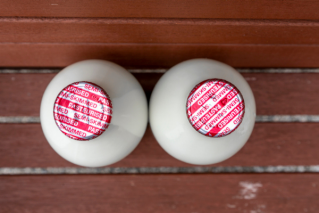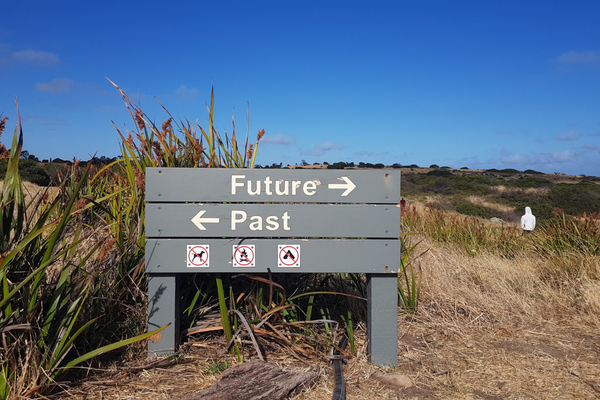
Michelangelo, da Vinci, and Rembrandt painted many centuries ago. If we brought them back to life, and put them to work, what do you think they would most appreciate about working with today’s paints?
I would like to think that they would be amazed at the safety, accessibility, range of performance, and the extensive color palette from today’s coatings. Those artists are known as masters not only because of their skills to produce amazing art, but they did it with the limited materials of the day. Very often they needed to formulate their own paints, and their raw materials could be hazardous and/or challenging to obtain. Not to mention they had a limited color palate and finish effects.
Today you can go to the store and buy paint in a near infinite number of colors, sheens, and viscosities. An architectural paint of today is almost always waterborne, available at a cost of ~$30 a gallon (which translates to about $3/pound!!), applies beautifully, is resistant to damage, and is often warrantied for as long as you own your home!
Beyond the amazing colors and sheens, a huge range of materials to impart specific rheological (viscosity) properties and optical effects are just a click or store visit away. Can you imagine what those creative minds could do with the accessible materials of today?
What is one particularly surprising or interesting fact about paint that most of our readers won’t know?
There is an amazing amount of technology in that $30/gallon can of paint. Opaque polymer (400-nm particles with a single 300 nm void in the middle to scatter light), ambient curing, self-assembling polymer pigment composites, advanced morphologies, synthetic pigments with multiple layers, associative thickeners, and beyond to provide a material that a “do it yourselfer” can apply and have it look beautiful and keep looking good for many years. Bonus point is that the coating also provides critical protection to whatever it is covering.
You were part of a company that was acquired. What was that like for you?
I was extremely fortunate as I was in a relatively safe area with a skill set that was in demand. I also had great leaders and mentors which really helps during times of transition. Actually, this was not my first (or second) big change, change is continuous. Companies are always buying each other, management changes, within a company you may either transfer or be transferred to totally different role or business. Even in academia professors move from university to university (mine did, as have many others). Being young and much more naïve also helped. Again, change is continuous, there are risks but also many opportunities in change. Be aware of the risks but recognize (but don’t be consumed by them) and take advantage of the opportunities!
Regarding a specific example, a number of the fellows and scientists from Dow were very supportive during the acquisition of Rohm and Haas. The cultures were very different. They had the really tough job to help us even when we did not want to be helped. They showed amazing grace and professionalism while still being very human. Great role models!
“Watching paint dry” is a euphemism for boring. I’m guessing as an expert in paint, you don’t agree. What do you find particularly fascinating about the science of coatings?
Well, like many things, watching paint dry depends on how close you look. The Super Bowl, the final game of the World Series, or the World Cup probably don’t look exciting if viewed from a jet, but it’s a completely different story when viewed at ground level. Drying paint is the same story; if we are doing our jobs right it should look really boring to the naked eye, but when viewed at the microscopic level (and smaller) it is a fascinating process! Another way to put it is that “Watching paint dry” may be boring but studying the way a paint dries is a whole different world.
I work in the area of waterborne dispersions (latex paint). The process of transforming these complex and dynamic dispersions into a beautiful yet tough film requires an amazing range of materials that must be formulated to work together (while being low cost and safe to handle). Waterborne architectural paints typically comprise water (as a carrier), binders (roughly 150-nm polymer particles that will need to coalesce together to bind the dried paint film and provide many of its properties), pigments (for light scattering and bulk), and additives (that impact both wet and dry properties of the paint).
Before we even get to watch the paint dry, the rheology of the paint needs to be dialed in to give good application properties and a flawless finish. Ideally the paint will be engineered to shear thin to allow for smooth application as well as flow and leveling, then controllably rethicken to inhibit “sagging” which is the paint forming “drips” or “runs” after application.
Viscosity is often controlled by associative thickeners that can be imagined as materials with controlled hydrophobic and hydrophilic segments where the hydrophobic segments reversibly adsorb to polymer surfaces to form an associative network “thickening” the system. When shear is applied (such as when paint is rolled onto a wall) that network is broken, the viscosity drops, and the material is allowed to flow and level before the paint rethickens as the network is reformed. There are a range of rheology modifiers available allowing the paint formulator to optimize the application performance desired. This is all before the paint dispersion starts drying!
Once applied, the paint starts to dry and the dispersion “jams” in place as water flows to the surface and evaporates. As the water goes away, the polymer chains of the binder particles come together and interdiffuse to form the film which binds all of the solid ingredients of paint together and adheres it to the substrate. The polymer interdiffusion often takes days and is an area of great study, especially facilitating the film formation while also providing a tough, non-sticky, damage-resistant surface.
The beauty of having the binder polymer in particle form is that it allows for high molecular weight polymer and low viscosity. Historically the film formation of the binder particles was facilitated through the use of a volatile coalescent which would temporarily depress the Tg (glass transition temperature) of the polymer allowing the interdiffusion to occur, then evaporate “away” restoring the polymer Tg to its inherent level.
Unfortunately, these coalescents are considered VOCs (volatile organic compounds) and were the source of “new paint smell” that is no longer acceptable in today’s very low VOC world. Techniques we use today to balance film formation and properties (without coalescent) include a range of latex polymer particle morphologies as well as ambient cure crosslinking which does not trigger until after the film has been formed. I could go on and on; there is great deal published on this if people are interested.
Hiding plays a big role in your research. What is hiding, and what makes it particularly challenging?
Hiding is the ability of a film to “obscure” what is below it. One could also think of it as an ability to cover whatever is on a wall before painting. Hiding is a challenge because paint films are very thin, yet they are expected to both hide color from below (as well as block stains which may migrate up through the paint film) while also be extremely resistant to damage. And if they are stained, they need to be able to be washed or easily touched up.
We work carefully to understand the fundamentals of each of these challenges and address them in a logical and mechanistic fashion. If we focus on hiding, we see that while most of this effect comes from the light-scattering ability of the prime pigments (such as titanium dioxide, TiO2), the rest of the formulation materials very often have a significant impact on its efficiency. The grade of TiO2 used in waterborne coatings is typically synthetic rutile of about 300 nm and with a very thin passivating surface coating of alumina and/or silica. This pigment can be the highest cost component in a paint formulation and takes significant resources to produce.
A challenge is that when the pigment particles get close to each other they lose light-scattering efficiency rapidly, and for a number of reasons (including how thin the paint film is), these materials are almost always crowded together. To address this phenomenon, we developed a technology platform where we took the ubiquitous binder particles that are required in conventional paint formulation and then made them “smarter.” These “adsorbing” binders are designed in such a way that they will find the TiO2 particles during the paint-making process and spontaneously assemble into polymer pigment composites. These structures have latex controllably adsorbed on the pigment surface forcing it to be spaced upon film formation. This technology can allow for a 20% deduction in TiO2 usage while also improving barrier properties and is just one of the techniques we have developed to maximize light-scattering efficiency.
A search reveals not one academic department of paint or hiding. Does this mean your graduate work, and the work you’ve done in your career, are pretty different? What skills from your academic training were most helpful in preparing you for the industrial career? Were there other trainings, skills, or traits that particularly contributed to your success in industry?
For industrial positions I think it is much more important to be a strong well-rounded scientist with a range of skills than to have absolutely mastered one narrow area (at the expense of others). A creative team with diversity in thought and experience gets problems solved efficiently. The departments that focus on coatings are very multidisciplinary and great at what they do. We often look to the work of academics for the fundamental principles and leads that we need to address critical challenges and transform these into practical systems. Facilitating the interactions between scientists in academia, industry, and government labs is an important role for ACS.
My graduate training was in physical organic chemistry and I did my post doc in organometallics--both very different in specifics from what I do today but the fundamental principles are the same. I like to joke that I spent my academic time trying to push molecules up hill in energy. I then saw the light and decided to stop fighting mother nature. Polymers are very interesting, valuable, and (at least the ones I work with) downhill in energy to make!!
Kidding aside, my training was quite multidisciplinary and at the end of the day, all ruled by physics. I am a firm believer that to be successful in industrial chemistry you need to be a scientist who has a strong grasp of fundamental sciences and creativity and insatiable curiosity and excellent problem-solving skills. Communication skills are also critical; you need to clearly convince others why your inventions are valuable and worthy of spending resources on. It is critical to be able to see the big picture and communicate it. Getting a product to market means “checking off all of the required boxes” such as all performance requirements, cost, regulatory, fits into available assets, etc. It requires a diverse team of competent and motivated people and the ability to envision the big picture to get this done.
Another big help for me was that I actually started in industry right out of high school as a lab tech at a local “toll” chemical plant. A toll plant typically produces a large number of materials for other companies and needs to be very flexible. This provided me with a great opportunity to see a wide range of chemistry since we made a new group of products every week and often had to fit this chemistry into assets that were not designed for it.
By the time I earned my bachelor’s degree I was lucky enough to already have four years of practical industrial experience. My sophomore organic project was done at the thousand-gallon scale! This combined with the fundamental science I learned during my Ph. D and post doc studies really prepared me to quickly get up to speed in industry.
What have you done recently to improve some aspect of yourself?
Learn to take a deep breath and listen more carefully. Take another deep breath and (where appropriate) allow others to make decisions, give presentations, and even make mistakes (within reason) so that they can grow and develop into the next generation of scientists.
Every time I take a personality test, it comes back with the “needs to be in control” personality type flashing in red. I really, really want to lead everything, but I have learned that others will not learn if I do that. My mentors were kind enough to step back and gave me a chance to prove myself. And I need to do that as well. The challenges are not getting easier or less important; we need to be developing well rounded scientists with great problem-solving skills, confidence, and communication skills.
More practically I also make time to exercise and eat healthy. Cooking can be an amazing example of chemistry in action (if you have not already, take a look at the chemistry of everything from baking to slow-cooked meats).
Solvent-based coatings still find use despite efforts over the course of your career to replace solvents with water. What is keeping the aqueous systems from completely replacing solvent-based systems?
The real value of paints and coatings goes well beyond the obvious aesthetic value we initially think of. Coatings are critical for protecting the substrate to which they are applied. Much of the world’s infrastructure will rapidly decay if not properly coated due to damage from water, UV, corrosion, etc.
The transition to waterborne in the massive architectural paint market is mostly complete. In a number of demanding industrial coatings, the technology has not yet evolved to where it needs to be, but it is getting there. Every year creative chemistry raises solvent-free coating performance levels facilitating the use of less and less solventborne coatings. A range of technologies are used in these spaces including waterborne chemistries, powder coatings, “high solids,” and other low-VOC solutions. While I work in waterborne systems, the important part is that coatings scientists continue to deliver technology that facilitates the global reduction in solvent usage while also extending the coatings ease of use, functionality, and practical life.
What technical problem would you tackle if time and money were not an issue?
That is a very big and open-ended question … I would love to figure out how to provide enough quality food, clean water, and effective medicine for the world’s population. A clean source of affordable energy would be awesome (and critical) too. These are huge challenges and while there are thousands of scientists working around the world on them today it is going to take generations of high-quality scientist to continue to create the level of progress we need.
Practically every project I work on today has a significant sustainability component to it, but there is still so much to be done. One way we can attack these huge challenges systematically is by actively identifying and developing the critical scientists of tomorrow. We will need all of their curiosity, knowledge, and creativity to solve these incredibly important challenges (as well as whatever tomorrow throws at us). The scientists of today and tomorrow will also need to work together on the right problems and have access to the right information.
On a much more focused scale, I would really like to be able to work on practical self-healing coatings. There is some really nice work being done in the space with everything from “repairing capsules” that open upon damage to dynamic covalent bonds and beyond. This would provide greatly improved protections of substrates (without human detection and intervention!). The applications space for this technology would be amazing, from anti-corrosion to aerospace.
What’s the one thing you wish you had learned earlier in your career?
I keep learning every day. Actually, I would love to unlearn how much we don’t know about some areas! Life was a lot easier when I thought we knew everything; there was a lot of freedom in not knowing what you don’t know. I do wish I had learned earlier how much fun and rewarding co-organizing symposiums with ACS is. You get to pick a topic you are really interested in and then bring together the world’s experts in the area to learn and collaborate. I had dabbled in this earlier but did not really get it until more recently.
Talk about mentors who helped you. What made them good mentors, and what are some key pieces of advice you share when mentoring others?
I was always incredibly fortunate to have great mentors and would not be where I am without them! The most valuable guidance I received was to think bigger, recognize all that is possible. Growing up in a very rural area I had no idea what chemistry was or certainly that someone like myself could ever earn a PhD in the field. Thankfully the plant chemist I worked with when I was a tech, my mentors at the local community college, and my mentors at Hope College opened my eyes to this. I cannot tell you how much I learned from graduate and post doc advisors, well beyond chemistry. At some point every single day I think to myself “That was something Larry (Scott) or John (Gladysz) would say or do” and smile. During my time in their groups, I thought I was just learning focused chemistry. But what I was really learning went well beyond.
My mentors at Rohm and Haas and then Dow listened and cared, they made an effort and stuck their necks out for me, they helped recognize and address my flaws and were graceful when I got credit for their contributions. They honestly shared their mistakes so I did not have to learn the hard way. I took these lessons and I try to employ these learnings every day as I mentor others. The really critical mentors can be broken into two groups: one helped me learn how to think, solve problems, communicate and coach others while the other group helped build my network. They taught me to see the big picture for projects and people and that you don’t make groundbreaking changes by doing the same thing as everyone else.
As a mentor I also like to remind anyone that will listen that everything is controlled by the laws of physics and these laws cannot be broken or even bent. If it looks like those laws are not being followed, a giant red flag should go up and you need to look more carefully! It is not magic, it is physics, you just need to look deep enough.
Congratulations. You have just been given your own talk show, and you need to invite three guests to join you as you kick things off. You can choose from anyone currently living. Who will you be hosting that first night?
Outside of science: J.J. Abrams, George Lucas, and Edward Welburn. Extremely creative people who changed their fields forever.
Within the scientific field I already have something of a talk show, something many of us have access to but might not recognize it! As cited above, through organizing symposia with ACS or inviting seminar speakers at Dow, I can meet and interact with the scientists I am interested in. It is a great opportunity that not enough people take advantage of.

James Bohling is a Fellow of Dow Coating Materials. Jim earned a BS in chemistry from Hope College in 1992, Ph.D. in physical organic chemistry from Boston College in 1997, and completed post-doctoral research at the University of Utah. Jim joined Rohm and Haas in 1999 (now The Dow Chemical Company) performing research in the ion exchange resins business before joining the coatings business in 2005.
He has experience in developing products for a range of markets including low-odor coating materials and high-performance paint binders, bioprocessing and water purification media, as well as supports for biocatalysts and solid phase synthesis. His recent responsibilities include polymer synthesis team leader for Dow Coating Materials hiding program, which won external recognition including an R&D100 Award, EPA Presidential Green Chemistry Challenge Award, ACS Heroes of Chemistry recognition, as well as critical commercial success.
He has spoken on coatings and industrial chemistry around the world and is an inventor on more than 60 granted U.S. patents.
This article has been edited for length and clarity. The opinions expressed in this article are the author's own and do not necessarily reflect the view of their employer or the American Chemical Society.













